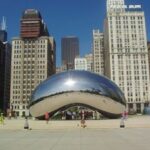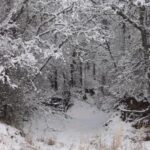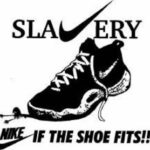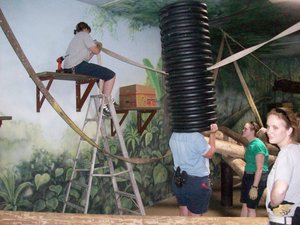Lewis Hine was a photographer who was famous for his historical pictures of immigrant and child laborers in the early 1900’s, which he did to help gain public awareness of the harsh labor.
Born Lewis Wickes Hine on September 26, 1874 in Oshkosh, Wisconsin, Hine enrolled in the University of Chicago in 1900, where he met Frank E. Manny, superintendent of the Ethical Culture School in New York. Hine used his camera in his teachings and also photographed events at the school.
In 1904, Hine did a photo project at Ellis Island in New York, the point of entry for immigrants from many countries entering the United States. Two years later, he became a freelance photographer for the National Child Labor Committee (NCLC), getting his start by taking pictures of tenements in New York City. The goal in taking his photos was to encourage people to take corrective action in the labor of immigrants and children.
In 1908, Hine was given a salary for doing his work and started taking pictures of children working in factories, mines, textile mills and other industries around the country. The children in the photographs, including laborers in Macon, Georgia, the Olympia Mill in Columbia, South Carolina and mines in Pennsylvania, were deprived of health, education and the chance of a better future.
During the years that followed, Hine continued to travel and take pictures, including those of a seven-year-old demonstrating necktie forms through a store window, boys setting pins at a bowling alley, fish cutters at a Maine canning company and cigar makers in Tampa under the age of 14, who also smoked those cigars.
Beyond his photography work, he also gave lectures for the NCLC to help further promote their causes. His efforts put the Keating-Owen Act into effect in 1916, a measure restricting children under the age of 14 from working in factories or shops. The next year, he started working for the American Red Cross, photographing the refugees and displaced civilians in Europe during World War I. When Hine returned to New York City in 1920, he began labeling his work as “Interpretive Photography”, reflecting his belief in the symbolic and artistic aspect of his photography.
In 1930, Hine was hired to shoot the construction of the Empire State Building in New York City, documenting the dignity of a proud postwar labor force in the United States, a stark change in direction from his previous work, which reflected on the darker side of labor. Two years later the photographs were published in his book, Men At Work.
The Riverside Museum in New York City arranged a retrospective of Hine’s work in 1939, among works from friends and fellow photographers Paul Strand, whom he met at the Ethical Culture School’s photography club, as well as Alfred Stieglitz, husband of renowned abstract painted Georgia O’Keeffe, who was an inspiration to Hine during his interpretive photography period.
Hine died a year later on November 3, 1940 at the age of 66, amid his struggles to make enough money from his work. The last few months of his life were marked by extreme poverty; shortly before his death, Hine lost his house after failing to keep up with his debt. His son Corydon donated his prints and negatives to the Photo League, which would later donate the prints to the George Eastman House in Rochester, New York.
Lewis Hine was a photographer who will always be remembered for contributing to history. His photographs helped to get the people involved in immigrant and child labor issues in the early 1900’s and are considered today to be pieces of history.
Sources:
“Biography of Lewis Hine.” Photocollect.com.
“Lewis Hine.” Spartacus Educational.





